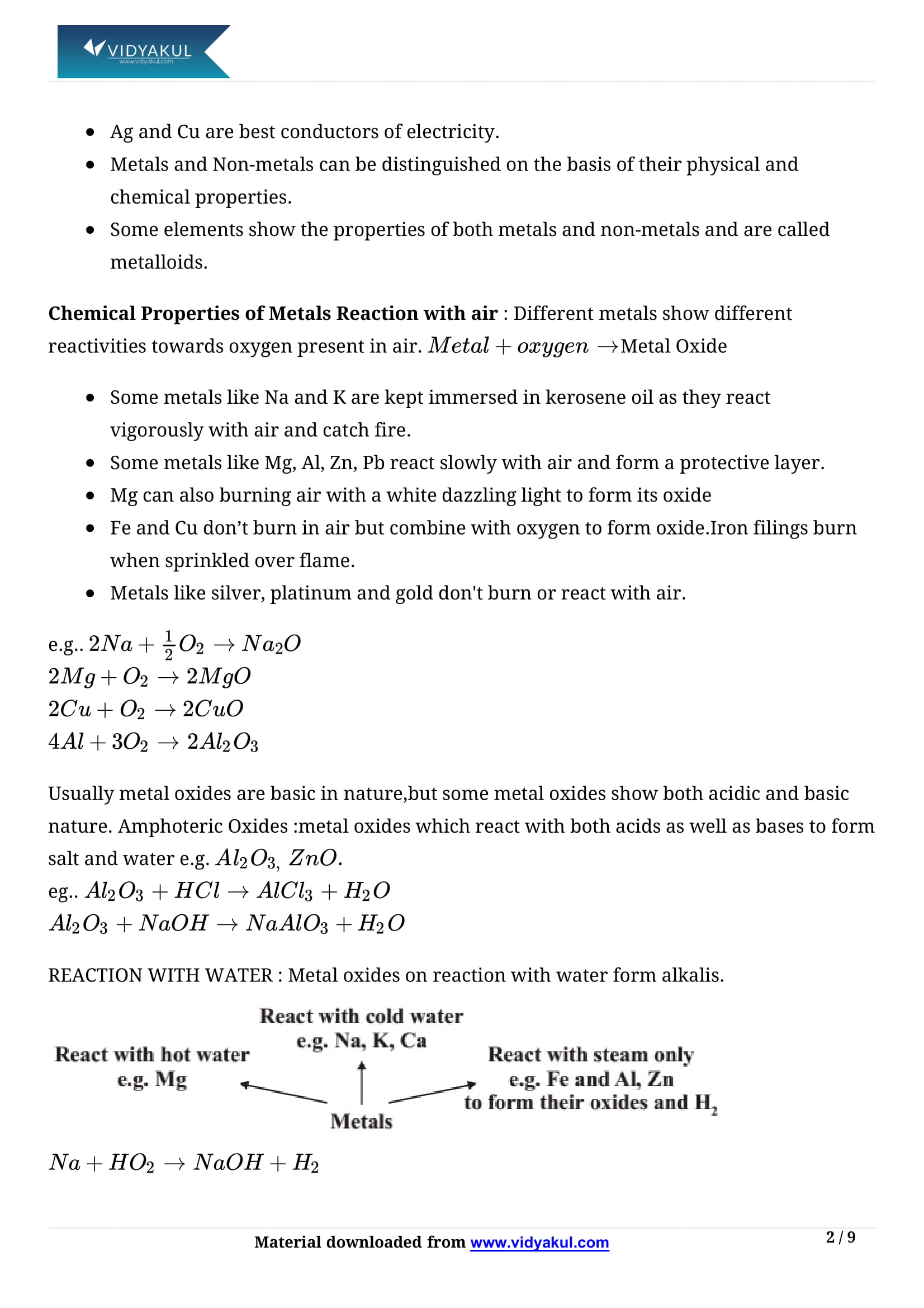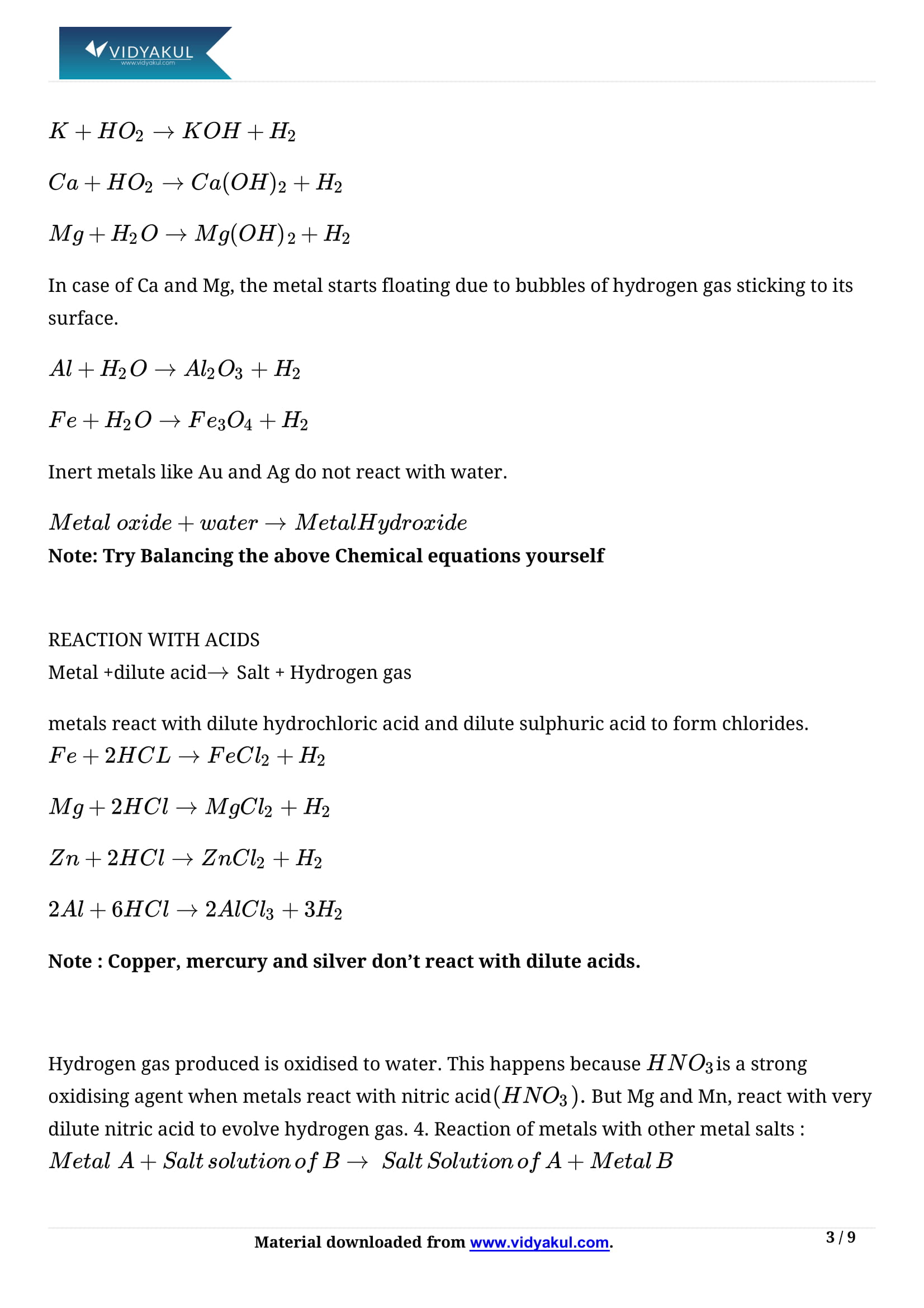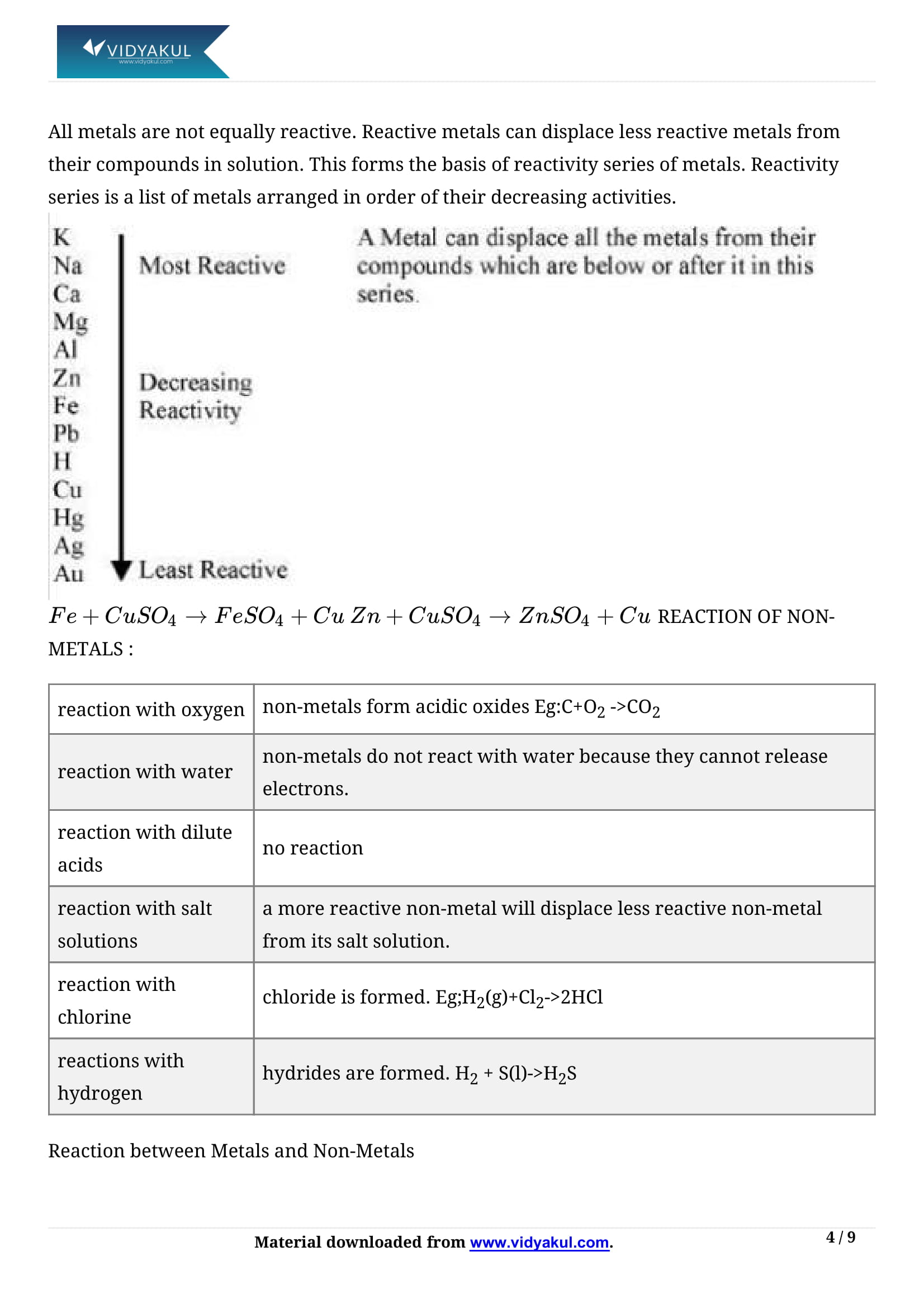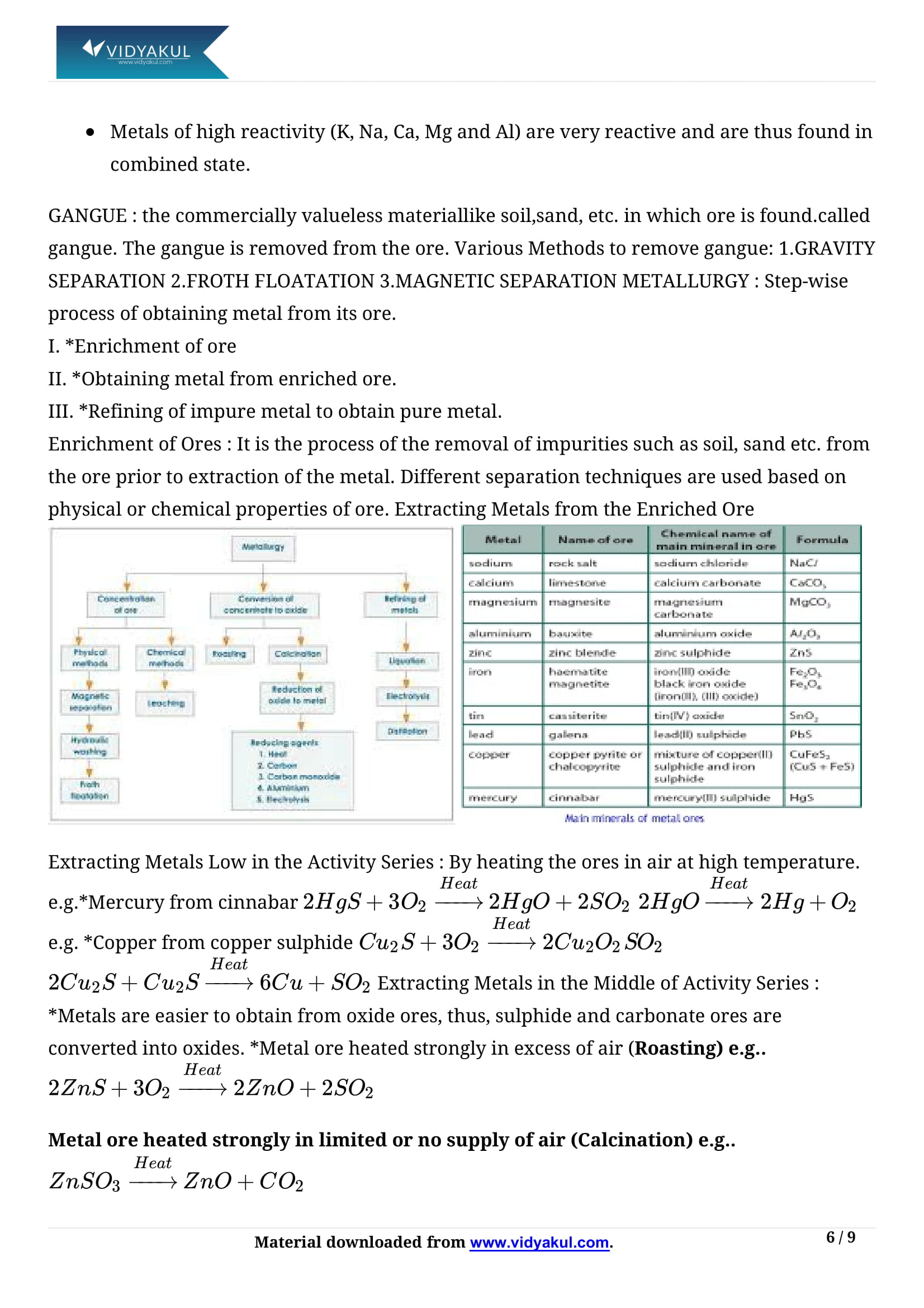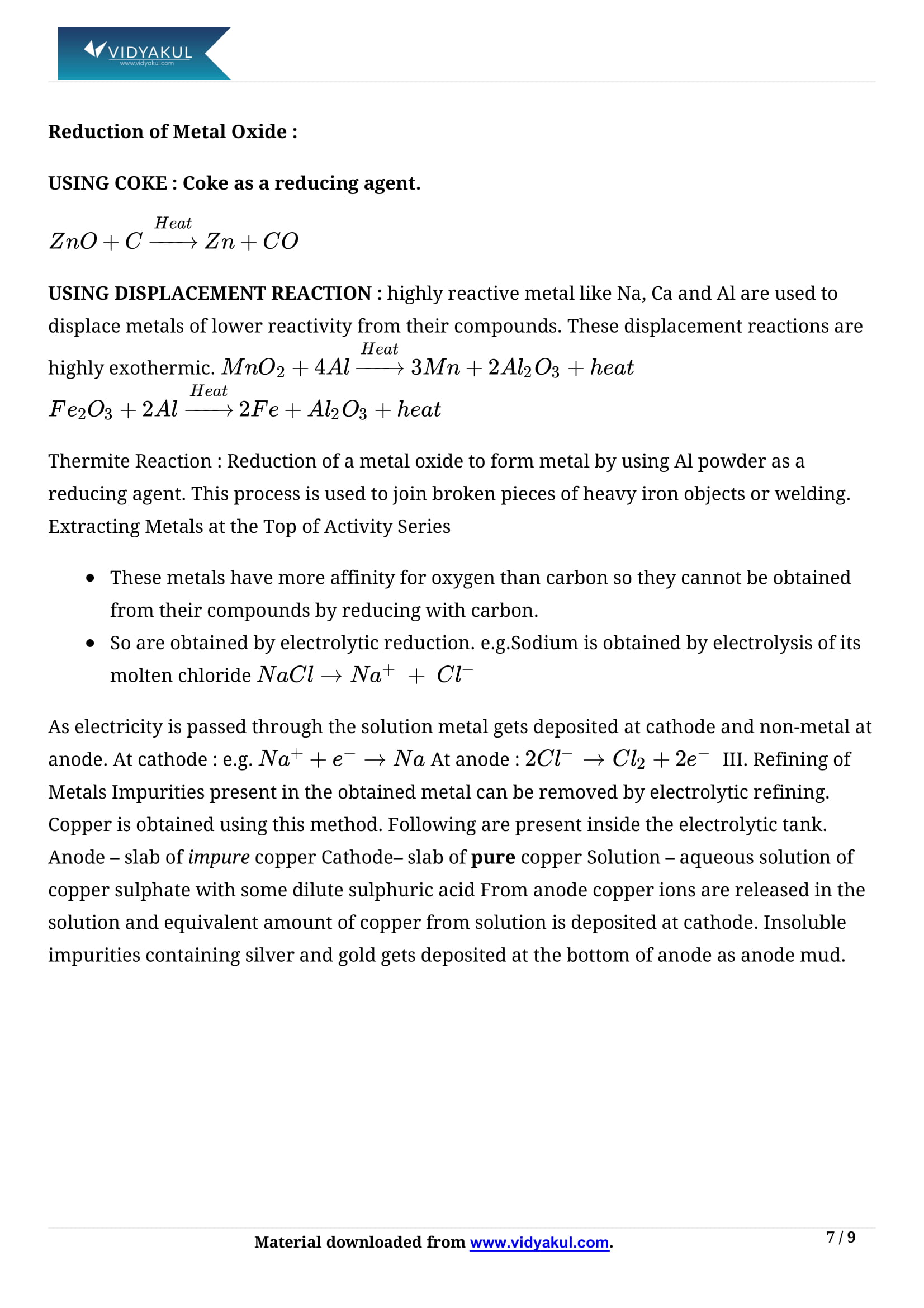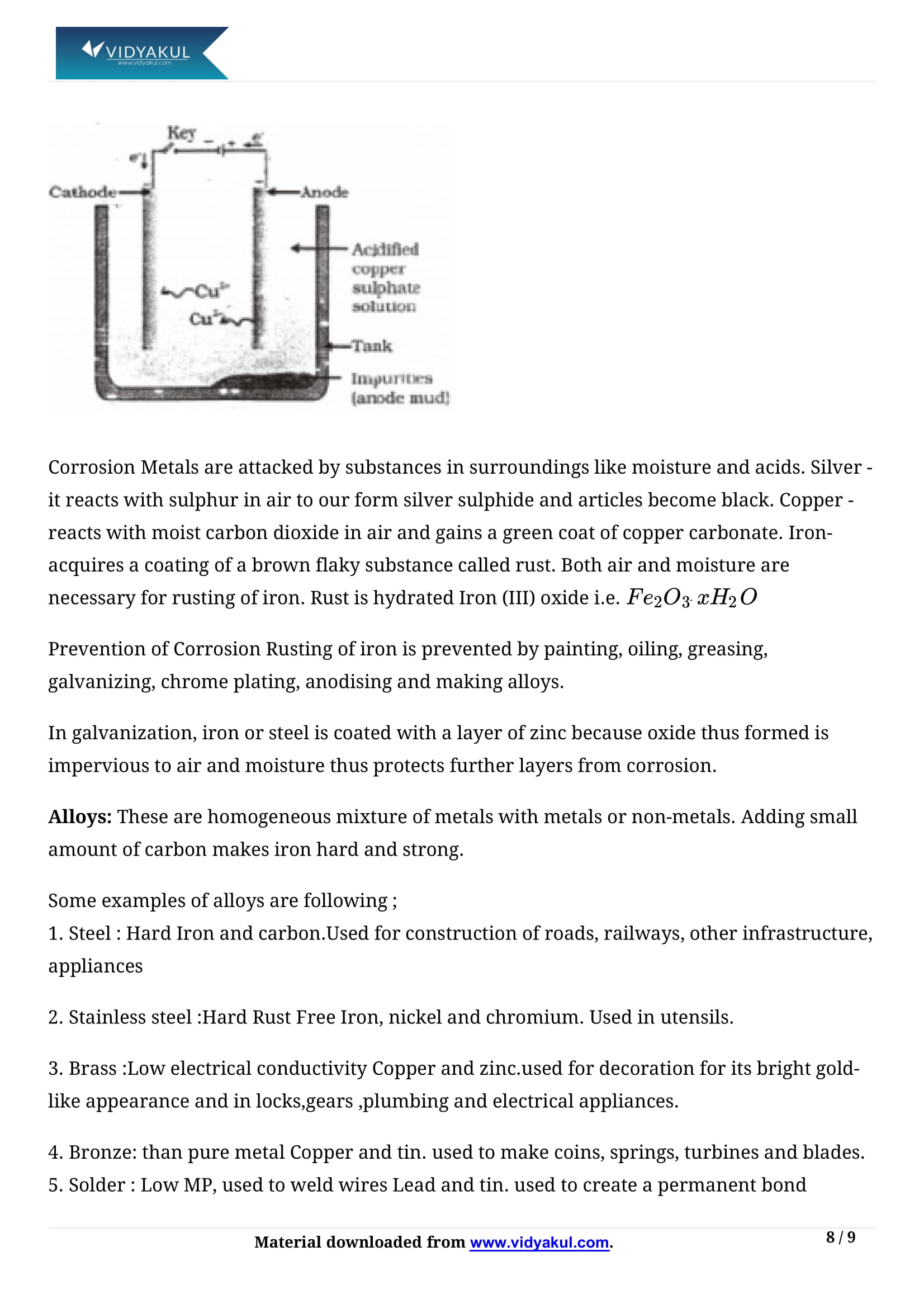Metals and Non-metals Class 10 Notes

Chapter 3 Metals and Non-metals
In 10th grade, science is considered an important subject on the exam. Chapter 3 "Metals and Nonmetals" is one of the most important chapters in the 10th grade of natural science. Students must complete the Vidyakul NCERT notes for Class 10 Science Chapter 3 to score on the exam.
Vidyakul provides over 1,000 exercises from Chapter 3 Science for 10th grade to help students understand the subject. These exercises from Vidyakul are free and expand students' knowledge. Vidyakul learning platform simplifies exam preparation. Continue reading this article for more details.
CBSE CLASS 10th SCIENCE CH-3
Points to Remember
While studying, the important points to remember from this chapter are as follows:
Based on their physical and chemical properties, elements are classified as metals, nonmetals, or metalloids.
Metal hydroxide and hydrogen gas are formed when metal oxide dissolves in water.
Metal oxide and hydrogen gas are formed when the metal oxide is insoluble in water.
Metal chlorides are formed when metals react with chlorine.
Most metals do not react with hydrogen.
Topics and Sub-topics
Vidyakul NCERT notes for Class 10 Science is the best learning resource for students. You can learn and practice Grade 10 science chapter concepts for free on Vidyakul. This chapter covers topics such as the chemical properties of metals and the physical properties of metals and nonmetals. Vidyakul also allows students to track and improve their progress.
Before you start preparing for NCERT Class 10 Science, you should be familiar with the topics and subtopics of NCERT Class 10 Science Chapter 3. A thorough knowledge of the subject will help you absorb information quickly.
Few Important Questions
A student performs an experiment in which he dipped a copper coil to the silver nitrate solution. What will be observed from this experiment?
Gray coloured layer of silver appears on the surface of copper coil.
A student performs an experiment of burning magnesium ribbon in the air.
A chemical reaction takes place and as a result, a white powder X forms along with a bright white light. The aqueous solution of changes the colour of litmus paper to?
Oxides of metals like magnesium are basic in nature. Therefore, aqueous solution will change the red litmus to blue.
The atomic number of two elements A and B are 12 and 8 respectively. What type of a compound is formed when they combine?
The compound formed is AB which is ionic in nature. As we know, an ionic compound is a chemical compound in which ions are held together by electrostatic force. The electronic configuration of two elements A and B are 2, 8, 2 and 2, 6 respectively. From their electronic configuration, we see that A (magnesium) is a metal and B (oxygen) is a non-metal, thereby A loses its valence electrons and forms a cation while B accepts those electrons and forms an anion. These oppositely charged ions are drawn closer due to electrostatic forces and an ionic compound (MgO) is formed.
Based on their physical and chemical properties, elements are classified as metals, nonmetals, or metalloids.
Metal hydroxide and hydrogen gas are formed when metal oxide dissolves in water.
Metal oxide and hydrogen gas are formed when the metal oxide is insoluble in water.
Metal chlorides are formed when metals react with chlorine.
Most metals do not react with hydrogen.
A student performs an experiment in which he dipped a copper coil to the silver nitrate solution. What will be observed from this experiment?
A chemical reaction takes place and as a result, a white powder X forms along with a bright white light. The aqueous solution of changes the colour of litmus paper to?
The atomic number of two elements A and B are 12 and 8 respectively. What type of a compound is formed when they combine?
Learn more about it in Metals and Non-metals Class 10 Notes pdf.
Download Latest Class 10 Sample Papers 2019 for Board Exams
- CBSE Class 10 Sample Papers 2019 PDF
- CBSE Class 10 Maths Sample Papers 2019 PDF
- CBSE Class 10 Science Sample Papers 2019 PDF
- CBSE Class 10 English Sample Papers 2019 PDF
- CBSE Class 10 Hindi Sample Paper 2019 PDF
- CBSE Class 10 Social Studies Sample Papers 2019 PDF
Download this solution for FREE Download this PDF
Download Vidyakul App for more Important videos, PDF's and Free video lectures.

